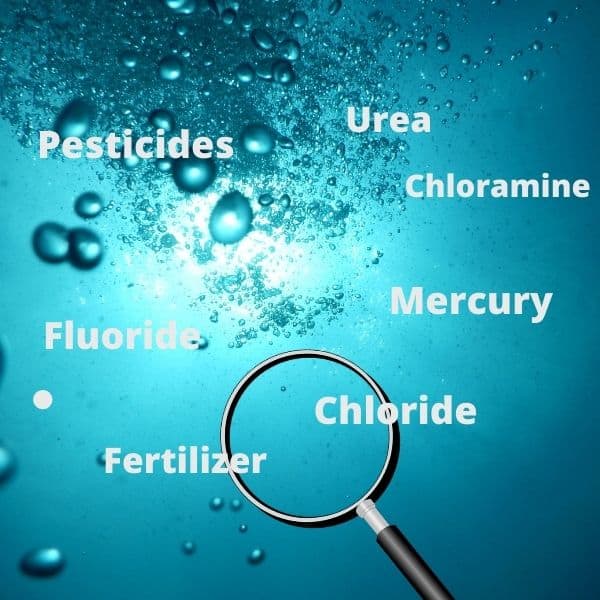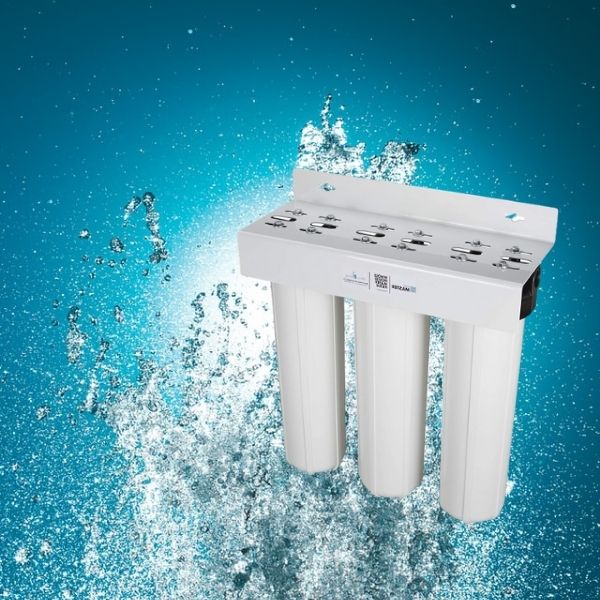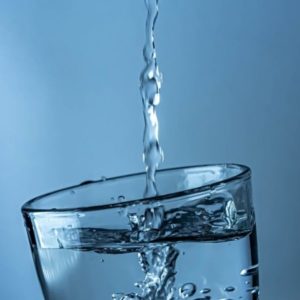Effective Ways of Removing Microplastics From Drinking Water
According to research, 93% of bottled water and 92% of tap water contain pesticides and microplastics. Maybe you read this stat, and that is what brought you here, so let’s talk about how to remove these chemicals from drinking water:
Reverse Osmosis
Reverse osmosis is the most common and convenient method for removing chemicals from drinking water. It might be expensive and hard to maintain, but its thin filter films can filter up to 0.001 microns, which can remove almost all the known chemicals.
Reverse osmosis can also remove some natural minerals like calcium and magnesium from your water, and it can waste up to 1 gallon of water for every 5 gallons it filters. So, do proper research before opting for reverse osmosis.
Commercial water filtration uses reverse osmosis systems.
Activated Carbon Filters
Activated carbon filters can filter contaminants as small as 0.5 microns or micrometers. Most pesticides are about 2.5 micrometers. This is why activated carbon filters are a comparable option to reverse osmosis for removing contaminants from drinking water.
It is also very affordable for home use and is environmentally friendly. They can be used for entire home filtration but are most famous for faucets or point-of-use filtration.
Distillation System
Water distillation is a boiling method until it evaporates and compresses, leaving contaminants with various boiling points. Distillation yields precise, safe drinking water. It is a reliable process for eliminating pollutants such as microplastics, heavy metals, and chemicals from water. It can produce disease-control water.
Because most floating pollutants are left behind in the distillation process, distilling water will remove most of the chemicals in the water.
What Are Chemicals in Water?

Chemicals are a contaminant that can get into our drinking water and make it unsafe to drink. But, most chemicals are hard to detect by human senses, so we need proper laboratory tests to assess the water quality.
The US Environmental Protection Agency (EPA) has established regulations for more than 80 pollutants found in drinking water that creates a health concern for humans. Many chemicals can get into the water and make it unsafe; some of them are:
- Chloride
- Fluoride
- Mercury
- Pesticides
- Fertilizer
- Urea
- Chloramine
Sources of Chemical Contamination
As for the source, there can be various ways of chemical contamination in water. The most talked-about source is untreated sewage running into rivers. Many countries worldwide do not treat their sewage and directly leave it in the rivers and water streams that supply water to homes.
The result is toxic and chemically contaminated water-spreading diseases.
Another primary source is the disposal of industrial waste into water system supplies. This toxic waste contains many contaminants and chemicals which can easily make you ill. Water pollution occurs when pathogens and pollutants such as phosphorus and nitrogen leak into open waterways, groundwater, and coastlines from the city, housing, and farming regions.
Many farmers dispose of fertilizer, urea, and agricultural waste into the nearby rivers and water system supplies which can cause water pollution.
Symptoms and Dangers of Chemicals
Waterborne infections are easily transferred when you use polluted water for different purposes such as drinking, preparing the ice, rinsing raw fruits and vegetables, and washing. As a result, you must be aware of the various illnesses and the degree of risk they provide:
Salmonellosis
Salmonella is generally caught by drinking faeces-contaminated water.
Hepatitis A
Hepatitis A is a severe infection that predominantly targets the liver. You can get the illness by consuming hepatitis A virus (HAV)-infected water.
Typhoid
Typhoid fever is a potentially fatal bacterial illness which causes large intestinal ulcers and ailments.
Cholera
Cholera is an illness that attacks the small intestine mainly.
Diarrhea
Diarrhea is among the most severe illnesses caused by water containing volatile organic chemicals. It causes bowel illness or food poisoning due to consuming water contaminated with microorganisms from animal or human faeces.
Cancer
The danger of cancer increases if you drink water that has been contaminated with substances such as methyl tert-butyl ether (MTBE) and pesticides,
Polio
The poliovirus causes an extremely deadly viral illness known as polio. The disease is spread by drinking water that contains chemical contaminants. The virus attacks and kills the nerve system when it penetrates the system, resulting in weakness and failure of organs.
Does Water Filter Remove Chemicals?

Yes, the latest water filtration systems can remove harmful toxins. Antibiotics, herbicides, organic compounds, perfluorinated chemicals, lead, mercury, and disease-carrying bacteria may all be removed from your drinking water using the filtration method.
Different types of filters are available for different chemicals. For example, RO filters for harmful ions, VOC water filters for volatile organic compounds, etc. There is a massive difference between filtered and unfiltered water.
However, there are some drawbacks to it. The first one is the price of the filter and its maintenance. These days, due to increased demand, water filters can cause a dent in your bank account even if you buy a mediocre one.
Another problem is the amount of water it can filter. Home water filters can not provide water for a big family due to their low capabilities.
The solution to this problem is Govt. and municipal water treatment plants; after all, it’s the responsibility of govt to provide safe drinking water to its citizens.
Which Water Filter Removes Chemicals?
After discussing everything, now it’s time to have a look at the best types of filters which can come in handy to remove impurities from water:
- Whole House Filter
Chemicals in water aren’t only harmful if you consume them, but they can also cause several other problems if you rinse your fruits, vegetables, or utensils from them. In that case, a whole house RO water filter can prove to be the best.
These filters ensure that all of the water that enters your home is pollutant-free.
The majority of customers use this filter for two reasons: to remove pollutants and eliminate hard water. Hard water will block the internal plumbing of your home and that equipment, causing significant damage to the pipes and kitchen appliances.
- Filtered Water Bottle
As its name suggests, this is a water bottle that can filter out chemicals and other contaminants from your water. The best part about this filtered bottle is that it is portable, and you can carry it around anywhere.
You can take it to the college, gym, cycling, or other outdoor activity. The only problem with this bottle is that it can’t filter bacteria due to its size and other limitations.
- Tap Mounted Filter
It is the simplest water filter you can get on the market today. It works on the plug-and-use policy because you don’t need a plumber to fix it. Just unbox it, set it on your faucet, twist it, and you are good to go. Though, it is a bit different from under-sink filters.
Buy a high-quality tap-mounted filter that can filter up to 0.5 microns and filter out some toxic chemicals.
- Counter Top Filter
This water filter is regarded as an entry-level version that people will choose. Some countertop filters have faucet attachments, while others have gravity-fed filtration.
People living in rental houses and apartments should also think about it because of the filter’s flexibility and mobility.
You can practically take out the faucet adapter and shift it to your new home with ease.
- Refrigerator Filter
As science progresses, fridges are connected to a water source for the ice machine and automatic cold water.
This kind of water filter is designed to keep you safe from contaminated water as you sip your ice-cold beverage.
While most of them only filter chlorine and particles, a few can also remove pollutants and toxins.
FAQ on Chemical Removal
How do I know if my house water is contaminated with chemicals?
Well, there is no reliable method to check this, but you can look out for the following signs to know if your water contains chemicals:
-The smell of chlorine or Sulphur
-Brown or orange color appears in the glass
-The oily layer at the top
-Taste like metal or rust
Does water softener remove chemicals?
Yes, water softeners are the primary source to remove pollutants from the water. But, they can only process certain chemicals like calcium and magnesium, etc., and can’t remove the rest of the substances.
Does Boiling Water Remove Toxins?
No, boiling water can’t remove toxins because it can only eliminate solid pollutants like bacteria or dust particles. Even most water filtration systems are unable to remove toxins.
Conclusion
Water is a blessing for life, but it can be a curse too if you don’t know how to use it. We went through every detail in detail and sincerely hope that you have loved the article; that’s the reason why you are here at the bottom with us.
Let us know your thoughts in the comments and share them with your loved ones if you care about their health and life.
